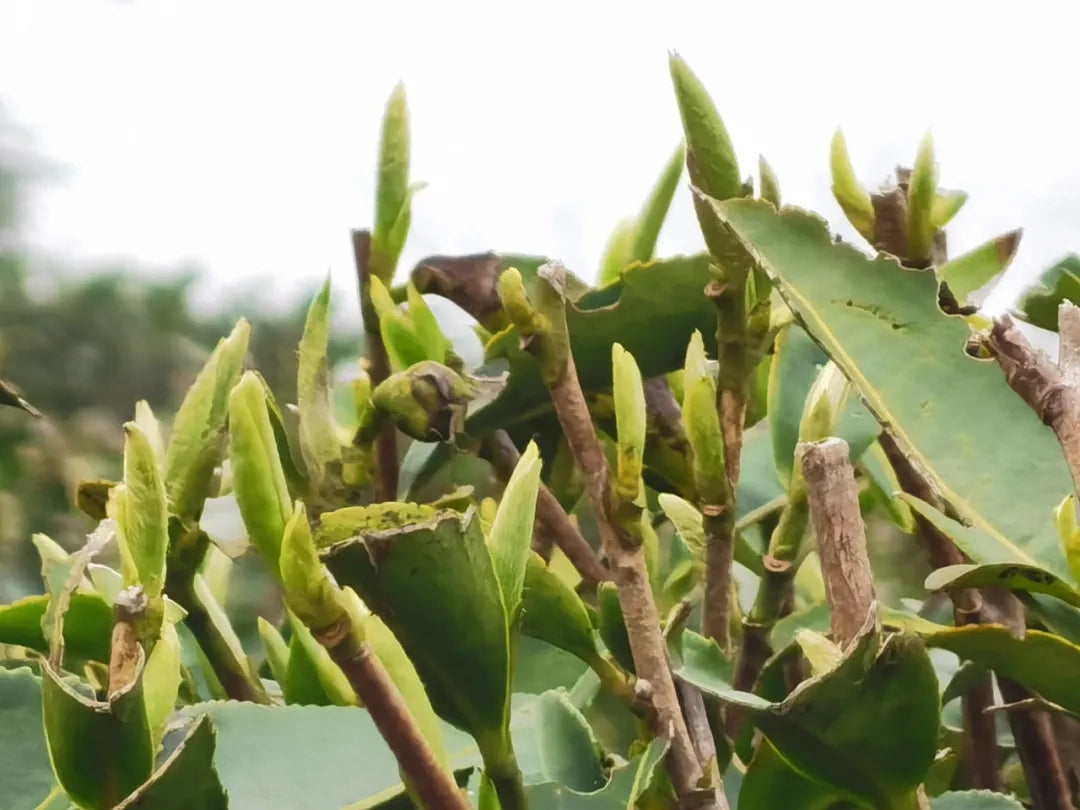
Small white tea "fish leaves", although often "abandoned," are actually not redundant
The tea tree leaves are divided into three types: scale leaves(鳞叶), fish leaves(鱼叶), and true leaves(真叶).

Scale leaves are similar in shape to fish scales,they are the first protective leaves that grow on tea tree branches,scale leaves are characterized by short life span and quick shedding.
True leaves are the ones that grow after fish leaves,what people commonly refer to as tea leaves are true leaves.

Fish leaves are intermediate between scale leaves and true leaves. Fish leaves have many different names,sometimes they're also called tea clothing or embryo leaves. They are the first small leaves that emerge after the bud appears.
Their leaf texture is relatively thick and crisp with entire margins or serrated tips.
Tea farmers don't harvest fish leaves separately, fish leaves are obtained as a by-product when picking silver needle tea buds.
So to some extent, they are a by-product of white silver needle tea.
Initially, the picking standards for white tea weren't as high as they are now. They would pick one bud with one or two leaves. The buds would become silver needle tea and the remaining parts would be used to make Shou Mei. So initially, fish leaves were included in the Shou Mei category.
The Fuding region raised the picking standards for white tea. Silver needle tea became exclusively single-bud picking. This eliminated the need for manual needle separation later.

But this method inevitably left some small fish leaves attached to the silver needles. Therefore, a refining process was added to white tea production.
They mainly use wind selection to blow away the small leaves. This separates most of the fish leaves.
So it's impossible for all silver needle tea to be completely free of small fish leaves.Unless it's competition-grade or custom-made silver needle tea, which requires extensive manual labor and time to hand-sort each needle individually.
Although small fish leaves are filtered out during silver needle production, small fish leaves aren't merely surplus leaves.
As a by-product of early spring silver needle tea, some buds are also separated during the white tea refining process.

Fish leaves definitely represent spring tea, harvested at the same time as silver needle tea.
Their taste is between silver needle and peony white tea, but relatively closer to peony white tea.
Though fish leaves may have a slight bitterness, their downy and glutinous fragrances are usually quite prominent.

Therefore, many manufacturers keep these excess fish leaves, either for daily drinking tea or storage.
Plus, being a by-product of silver needle tea, its yield is much lower than silver needle tea, making it quite rare indeed.
